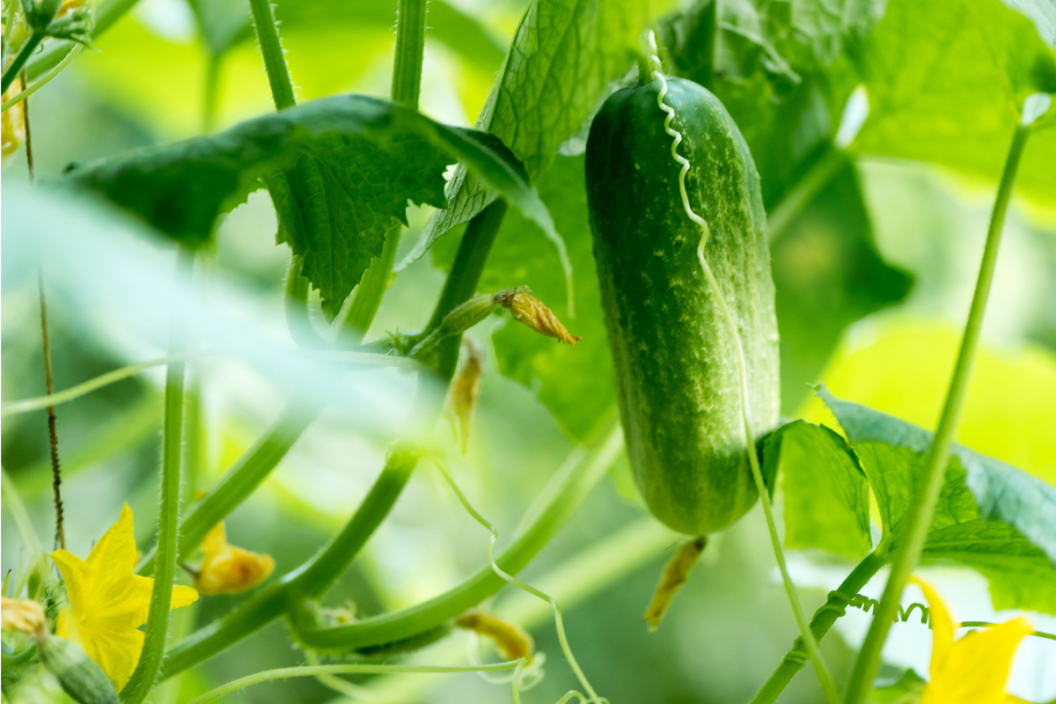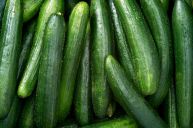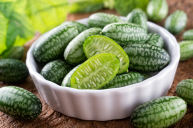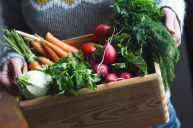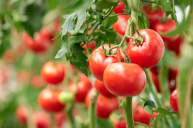Ever had a grocery store cucumber that kind of tasted like cardboard? For a long time, I thought I disliked the bland flavor of cucumbers. They were just kind of boring, and I couldn't really find anything exciting about them. When reading about Middle Eastern food culture, I found that cucumbers play a huge role in their cuisine. Most main courses were accompanied with a cucumber salad. I began to wonder, what was I missing about this tasty green vegetable? Here's everything you need to know when it comes to how to grow cucumbers, scientifically known as cucumis sativus.
Videos by Wide Open Country
As it turns out, a fresh cucumber couldn't taste more different from one that has traveled thousands of miles to sit on the grocery shelf. Growing cucumbers will not only produce the freshest, most flavorful cucumbers you can imagine, but they can be very lucrative, too.
Within two months, you'll have more cucumbers than you know what to do with! They grow well in container garden settings or in raised beds.
So find a place with maximum sunshine and fertile soil, and get ready to grow the best cucumber plants with these tips.
1. Choose Your Variety
Varieties of cucumbers can be broken into two distinct camps: pickling cucumbers and slicing cucumbers. The many types of cucumber are greatly varied, though fresh cucumbers are most often slicing cucumbers.
Pickling types seem to reach their peak faster and are usually bumpy and rough while slicing varieties are smoother and have a better fresh flavor.
2. Start Your Cucumbers Indoors
If you want to harvest early and speed up the growing season, start your plants indoors a month before the last spring frost date. Cucumber seeds indoors will sprout with proper care, so be sure to provide air circulation and soil moisture to your small gardens. Young plants will need more water than older, so make sure to give them at least one inch of water to keep them hydrated.
Once the frost date has passed so there's no danger of frost, you're in the clear to start transplanting your cukes, moving the plants outdoors for the best homegrown crop yet.
If a cold snap happens when you've already planted your cucumbers outside, simply use row covers, covering your cucumbers with light material like black plastic bags, bedsheets or newspaper.
3. Harvest Often
https://www.instagram.com/p/BI03i4LgcZo/
The more you harvest cucumbers, the more your healthy plants will produce fruit. As most vine crops are wont to do, the cucumber vines will spread throughout the garden so be sure to either erect a trellis (see below) if your garden isn't wide.
So if you want lots of cucumbers, one of the best growing tips is to harvest as often as possible to keep your plants fruiting prolifically.
4. Don't Let Them Get Too Big
Try to pick your cucumbers when they are of mature size. For slicing cucumber varieties, a mature fruit is around 6 to 8 inches. Pickling cucumbers mature fully around 3 to 4 inches.
Pickling varieties result in small cucumbers, which often can be helpful when using large mason jars that can hold multiple compact varieties at once. If the cucumbers get too large, they can get bitter-tasting or mushy and will turn yellow, no matter the bush varieties.
5. Keep Them Warm
https://www.instagram.com/p/BQ1AUluhU61
Cucumbers like warm weather and plenty of sunlight, which is why it's so important to plant after the last frost. When planting cucumbers, look for a spot with full sun, and add compost to your soil to give them plenty of nutrients and get them off to a good start.
You can use organic fertilizer to encourage the transition from indoor cucumber plans to outside, though a warm soil temperature matters the most when the time comes to plant cucumbers.
6. Build a Trellis
Cucumbers like to vine so you can trellis them to lift the fruit off of the soil, making your garden neat and pretty. DIY trellises can be made from an old tomato cage, metal garden stakes, or various kinds of wood.
Vining cucumbers promotes better airflow around the plant to prevent diseases like powdery mildew and bacterial wilt.
7. Avoid Bitter Cucumbers
If your cucumber is bitter, it may be experiencing heat stress or uneven watering due to alternating periods of drought and overwatering.
You can cut out the section of the plant that is producing bitter cucumbers, move the plant to an area with more even temperature, or you can work hard to water evenly and regularly.
8. Consider Your Climate
Cucumbers love the heat and humidity, and they need even watering to prevent them from becoming bitter.
Look at the seeds or starts and make sure they are well adapted to your climate. Most seed packets companies have resources to help you find your growing zone.
Fun Facts
1. If you thought you could only make gazpacho with tomatoes, think again! Cucumbers make a delicious and refreshing chilled soup in the summertime.
2. Russia has an official Cucumber Day to celebrate the vegetable! The town of Suzdal celebrates the first cultivation of the cucumber from 500 years ago. It takes place every year in July, culminating in a cucumber-eating contest.
https://www.instagram.com/p/BIDoJ5KATsr/
3. The viral sensation "cats afraid of cucumbers" created a hilarious number of videos where cat owners pranked their cat by placing a cucumber behind them while they ate. Apparently, cucumbers are a stealthy predator.
4. Spas are well known for putting cucumbers over your eyes, but do you know why? As it turns out, cucumbers contain ascorbic and caffeic acid, which soothes skin irritations and reduces swelling.
5. Cucumbers are high in vitamins B and electrolytes and have high water content. They are said to cure hangovers if you eat a few slices before going to bed.
6. Cucumbers have both male flowers and female flowers growing on the same plant! During pollination, pollinators like bees move pollen from female to male flowers.
Watch: Mason jar herb garden with Elissa the Mom | Rare Life
This post was originally published on May 20, 2019.
